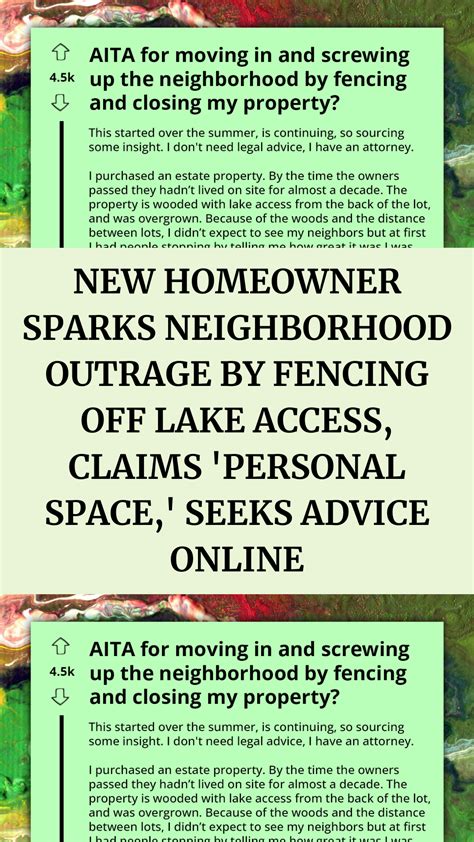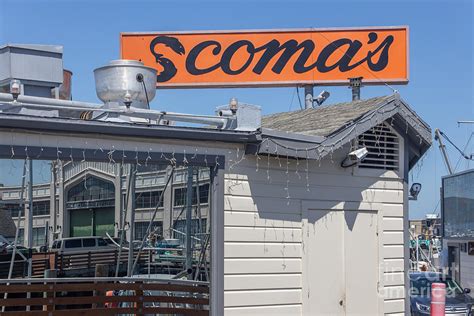
A California homeowner is facing intense backlash after demolishing a hillside retaining wall without prior notice or permits, causing significant damage to neighboring properties and triggering widespread outrage.
SACRAMENTO, CA – A Sacramento homeowner’s unpermitted demolition of a retaining wall has ignited a firestorm of controversy, leaving neighbors furious and grappling with property damage. The incident, characterized by residents as reckless and inconsiderate, has raised serious questions about homeowner responsibilities and the enforcement of local building codes.
According to neighbors, the homeowner undertook the demolition of the wall, which supported a significant portion of the hillside, without providing any prior warning or obtaining the necessary permits. The abrupt removal of the structure led to a cascade of soil and debris onto adjacent properties, causing damage to landscaping, fences, and even threatening the structural integrity of nearby homes.
“It was like a landslide,” said Maria Hernandez, whose property was directly impacted by the demolition. “One minute everything was fine, and the next, there was a river of dirt and rocks flowing into my yard. We had no warning, no time to prepare.”
The homeowner, who has not been publicly identified, has declined to comment on the situation. However, sources indicate that the homeowner believed the retaining wall was entirely on their property and that its removal would not affect their neighbors. This assumption has proven to be disastrously wrong.
The Sacramento County Department of Building Inspection has launched an investigation into the incident. Officials confirmed that no permits were obtained for the demolition and that the homeowner is now facing potential fines and orders to remediate the damage.
“We take these matters very seriously,” said a spokesperson for the department. “Unpermitted work can create hazardous conditions and compromise the safety of the community. We will thoroughly investigate this situation and take appropriate action.”
Neighbors are demanding that the homeowner be held accountable for the damage caused by the unpermitted demolition. They are also calling for stricter enforcement of building codes to prevent similar incidents from occurring in the future.
“This is not just about the damage to our properties,” said John Williams, another affected resident. “It’s about the disregard for the safety and well-being of our community. We need to ensure that this never happens again.”
The incident has sparked a broader debate about the responsibilities of homeowners and the importance of communication within neighborhoods. Many residents feel that the homeowner acted selfishly and without considering the potential consequences of their actions.
“We all have a responsibility to be good neighbors,” said Sarah Johnson, a resident who lives several blocks away from the affected area. “That means communicating with each other and respecting each other’s property rights. This homeowner failed to do that, and now everyone is suffering.”
The long-term impact of the demolition remains to be seen. Engineers are assessing the stability of the hillside and determining what steps are necessary to prevent further erosion and damage. The cost of repairing the damage to the affected properties is expected to be significant.
As the investigation continues, the community is left to grapple with the aftermath of the homeowner’s actions. The incident serves as a stark reminder of the importance of following building codes, communicating with neighbors, and considering the potential consequences of one’s actions.
The situation has also highlighted the critical role of local government in enforcing building regulations and protecting the safety and well-being of its citizens. Residents are urging the Sacramento County Department of Building Inspection to take swift and decisive action to address the situation and prevent similar incidents from occurring in the future.
The affected neighbors are exploring their legal options, including the possibility of filing a lawsuit against the homeowner to recover damages. They are also working together to support each other and advocate for stricter enforcement of building codes.
“We are a close-knit community, and we will get through this together,” said Maria Hernandez. “But we will not let this homeowner get away with what they have done. We will fight for our rights and for the safety of our neighborhood.”
The saga of the unpermitted demolition continues to unfold, leaving a trail of destruction and a community in disarray. As the investigation progresses and the legal battles begin, the incident serves as a cautionary tale about the importance of responsibility, communication, and respect within a neighborhood.
Expanded Details and Context
The incident in Sacramento is not an isolated case. Unpermitted construction and demolition projects are a recurring problem in many communities, often leading to property damage, safety hazards, and legal disputes. These projects can range from minor renovations to major structural alterations, and they often occur because homeowners are either unaware of the permit requirements or choose to ignore them in an effort to save time and money.
However, the consequences of unpermitted work can be severe. In addition to facing fines and orders to remediate the damage, homeowners may also be held liable for any injuries or damages that result from their actions. Moreover, unpermitted work can void insurance policies and make it difficult to sell the property in the future.
In the Sacramento case, the homeowner’s decision to demolish the retaining wall without obtaining permits has had a ripple effect on the entire community. The damage to neighboring properties has caused significant financial losses and emotional distress for the affected residents. The incident has also eroded trust within the neighborhood and created a sense of unease.
The Sacramento County Department of Building Inspection is responsible for enforcing building codes and ensuring that construction projects are carried out safely and in accordance with regulations. The department reviews permit applications, conducts inspections, and investigates complaints about unpermitted work.
However, the department’s resources are limited, and it is often difficult to detect unpermitted projects before they cause problems. The department relies on residents to report suspected violations and to cooperate with investigations.
In the wake of the Sacramento incident, residents are calling for the department to increase its enforcement efforts and to educate homeowners about the importance of obtaining permits. They are also urging the department to streamline the permitting process to make it easier for homeowners to comply with the regulations.
The incident has also raised questions about the role of homeowners associations (HOAs) in preventing unpermitted work. HOAs are responsible for enforcing covenants and restrictions that govern the use of properties within a community. These covenants and restrictions often include provisions that require homeowners to obtain approval from the HOA before making significant alterations to their properties.
However, HOAs vary widely in their effectiveness. Some HOAs are proactive in enforcing their covenants and restrictions, while others are more lax. In the Sacramento case, the affected neighborhood does not have an HOA, which may have contributed to the homeowner’s decision to proceed with the demolition without obtaining permits.
The long-term solution to the problem of unpermitted work requires a multi-faceted approach. It requires increased enforcement by local government, greater awareness among homeowners, and more effective oversight by HOAs. It also requires a shift in mindset, from viewing permits as an unnecessary burden to recognizing them as a vital tool for protecting the safety and well-being of the community.
The Sacramento incident serves as a cautionary tale for homeowners everywhere. It underscores the importance of following building codes, communicating with neighbors, and considering the potential consequences of one’s actions. It also highlights the critical role of local government and HOAs in ensuring that construction projects are carried out safely and in accordance with regulations.
The emotional toll on the neighbors is significant. The destruction of landscaping and the potential structural damage to their homes has created a sense of anxiety and uncertainty. Many are struggling to cope with the stress of dealing with the aftermath of the demolition.
“I haven’t been able to sleep properly since this happened,” said John Williams. “I keep worrying about whether my house is going to collapse. It’s been a nightmare.”
Maria Hernandez echoed those sentiments. “I’ve lived in this house for 20 years, and I’ve always felt safe and secure here. Now, I feel like my home has been violated. It’s hard to describe the feeling.”
The affected residents are finding solace in each other’s support. They have formed a neighborhood group to share information, coordinate their efforts, and advocate for their rights. They are also seeking professional help to cope with the emotional stress of the situation.
The Sacramento incident has also sparked a broader conversation about the importance of community resilience. Resilience is the ability of a community to withstand and recover from adversity. It is built on strong social connections, effective communication, and a shared sense of responsibility.
The Sacramento community is demonstrating its resilience in the face of the unpermitted demolition. Residents are coming together to support each other, hold the responsible party accountable, and work towards a solution that will restore their neighborhood and prevent similar incidents from occurring in the future.
The investigation by the Sacramento County Department of Building Inspection is ongoing. Officials are gathering evidence, interviewing witnesses, and assessing the extent of the damage. They are also working to determine the appropriate penalties for the homeowner who carried out the unpermitted demolition.
The department has the authority to issue fines, order the homeowner to remediate the damage, and even file criminal charges in certain cases. The severity of the penalties will depend on the extent of the violations and the homeowner’s willingness to cooperate with the investigation.
The affected neighbors are closely monitoring the investigation and are prepared to take legal action if necessary. They are determined to ensure that the homeowner is held accountable for their actions and that they receive fair compensation for their losses.
The Sacramento incident is a reminder that the actions of one individual can have a profound impact on an entire community. It underscores the importance of responsibility, communication, and respect within a neighborhood. It also highlights the critical role of local government and community organizations in protecting the safety and well-being of residents.
The story continues to develop as the investigation proceeds and the legal battles unfold. The community remains united in its determination to rebuild and recover from the devastation caused by the unpermitted demolition. The incident serves as a powerful lesson about the importance of building strong, resilient communities that can withstand adversity and ensure the safety and well-being of all residents.
The Sacramento incident is also drawing attention to the issue of property rights and the balance between individual freedom and community responsibility. Homeowners have the right to make changes to their property, but those rights are not absolute. They are subject to regulations and restrictions that are designed to protect the safety and well-being of the community.
In the Sacramento case, the homeowner’s decision to demolish the retaining wall without obtaining permits violated those regulations and restrictions. It also demonstrated a lack of consideration for the rights and interests of their neighbors.
The incident has sparked a debate about the appropriate balance between individual freedom and community responsibility. Some argue that homeowners should have more freedom to make changes to their property, while others argue that the community’s interests should take precedence.
The resolution of this debate will likely depend on the specific circumstances of each case. However, it is clear that homeowners have a responsibility to consider the potential impact of their actions on their neighbors and the community as a whole. They also have a responsibility to comply with all applicable regulations and restrictions.
The Sacramento incident is a complex and multifaceted issue that raises a number of important questions about property rights, community responsibility, and the role of local government. It is a story that will continue to unfold as the investigation proceeds and the legal battles begin. The community remains united in its determination to rebuild and recover from the devastation caused by the unpermitted demolition.
The situation also highlights the potential for alternative dispute resolution methods, such as mediation, to resolve conflicts between neighbors. Mediation can provide a neutral forum for parties to discuss their concerns and reach a mutually agreeable solution. It can also be a less costly and time-consuming alternative to litigation.
In the Sacramento case, mediation may be an option for resolving the dispute between the homeowner and the affected neighbors. A skilled mediator could help the parties to understand each other’s perspectives and to find a way to repair the damage and restore the peace in the neighborhood.
The use of technology is also playing an increasing role in preventing unpermitted work. Some communities are using drones to monitor construction sites and identify potential violations. Others are using online platforms to make it easier for residents to report suspected violations.
The Sacramento County Department of Building Inspection is exploring the use of technology to enhance its enforcement efforts. The department is also working to improve its communication with residents and to make it easier for them to obtain permits.
The Sacramento incident is a reminder that preventing unpermitted work requires a collaborative effort. It requires the cooperation of homeowners, local government, community organizations, and technology providers. By working together, these stakeholders can create a safer and more resilient community.
The long-term impact of the Sacramento incident will depend on the actions that are taken in the coming weeks and months. If the homeowner is held accountable for their actions and the damage is properly remediated, the community will be able to heal and move forward. However, if the situation is not properly addressed, it could have lasting negative consequences for the neighborhood.
The Sacramento community is demonstrating its strength and resilience in the face of adversity. Residents are coming together to support each other, hold the responsible party accountable, and work towards a solution that will restore their neighborhood and prevent similar incidents from occurring in the future. The story of the unpermitted demolition is a story of destruction, but it is also a story of hope and resilience.
The legal ramifications are considerable. Neighbors can pursue civil lawsuits against the homeowner for damages to their property, including the cost of repairs, loss of property value, and emotional distress. The homeowner could also face criminal charges if their actions are deemed to be reckless or negligent.
The insurance implications are also complex. The homeowner’s insurance policy may not cover the damage caused by the unpermitted demolition. Even if the policy does provide coverage, the insurance company may try to deny the claim on the grounds that the homeowner violated building codes.
The affected neighbors may also have difficulty obtaining insurance coverage for their own properties if they have been damaged by the demolition. Insurance companies may view the properties as being at a higher risk of future damage.
The Sacramento incident is a reminder that homeowners should always consult with their insurance agents before undertaking any construction or demolition projects. They should also make sure that their insurance policies provide adequate coverage for potential losses.
The economic impact of the Sacramento incident is also significant. The cost of repairing the damage to the affected properties is estimated to be in the tens of thousands of dollars. The incident could also lead to a decline in property values in the neighborhood.
The Sacramento community is working to mitigate the economic impact of the incident. Residents are organizing fundraising events to help the affected neighbors cover their expenses. Local businesses are also offering discounts on building materials and construction services.
The Sacramento incident is a testament to the power of community. When faced with adversity, residents are coming together to support each other and rebuild their neighborhood. The story of the unpermitted demolition is a story of destruction, but it is also a story of hope and resilience.
The incident has also spurred discussions about the need for greater transparency in local government. Residents are calling for the Sacramento County Department of Building Inspection to make more information available to the public about permit applications and enforcement actions. They are also urging the department to hold public meetings to discuss issues of concern to the community.
The Sacramento County Department of Building Inspection is responding to these calls for greater transparency. The department is working to improve its website and to make more information available online. The department is also planning to hold a series of public meetings to discuss building codes and enforcement policies.
The Sacramento incident is a reminder that local government has a responsibility to be transparent and accountable to the public. Residents have a right to know what is happening in their community and to participate in the decision-making process.
The story of the unpermitted demolition in Sacramento is a complex and multifaceted issue that raises a number of important questions about property rights, community responsibility, the role of local government, and the importance of resilience. It is a story that will continue to unfold as the investigation proceeds and the legal battles begin. The community remains united in its determination to rebuild and recover from the devastation caused by the unpermitted demolition.
Frequently Asked Questions (FAQ)
Q1: What happened in Sacramento regarding the homeowner and the retaining wall?
A1: A homeowner in Sacramento demolished a hillside retaining wall on their property without obtaining the necessary permits or notifying their neighbors. This action resulted in a landslide of soil and debris onto neighboring properties, causing significant damage to landscaping, fences, and potentially the structural integrity of nearby homes.
Q2: Why is the demolition of the retaining wall considered problematic?
A2: The demolition is problematic because it was carried out without proper permits, indicating a violation of local building codes. Retaining walls are often essential for hillside stability, and their removal can lead to landslides and property damage, endangering neighboring properties and residents. The lack of notification to neighbors also compounded the issue, leaving them unprepared for the consequences.
Q3: What actions are being taken in response to the homeowner’s demolition?
A3: The Sacramento County Department of Building Inspection has launched an investigation into the incident and confirmed that no permits were obtained for the demolition. The homeowner faces potential fines and orders to remediate the damage. Affected neighbors are exploring legal options, including filing a lawsuit against the homeowner to recover damages.
Q4: What can homeowners do to avoid similar situations when considering property modifications?
A4: Homeowners should always consult with their local building department to determine if permits are required for any construction or demolition work. It is also crucial to communicate with neighbors about planned projects that could potentially affect their properties. Consulting with qualified engineers or contractors can help ensure projects are executed safely and in compliance with regulations. Understanding property lines and easements is also essential.
Q5: What lessons can be learned from this incident?
A5: This incident underscores the importance of following building codes and obtaining necessary permits before undertaking any construction or demolition work. It also highlights the significance of communication and consideration for neighbors when making property modifications. Furthermore, it emphasizes the need for stricter enforcement of building regulations and the role of local government in protecting the safety and well-being of its citizens. The incident also highlights the importance of community resilience and the need for neighbors to support each other during times of crisis.









